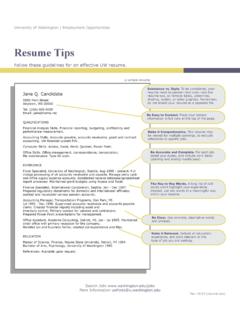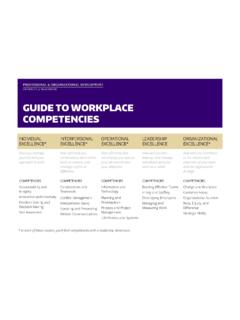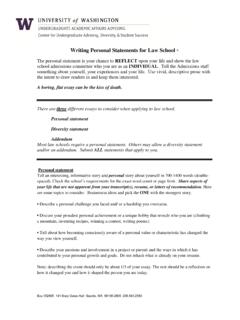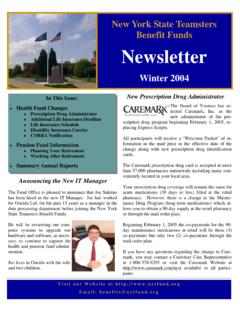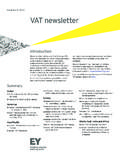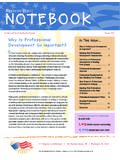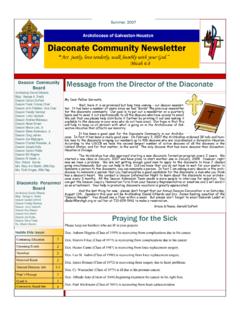Transcription of How to Create an E-Newsletter: From Beginning to …
1 1 How to Create an E- newsletter : From Beginning to Send Establish a Foundation for Success Step 1: Set Your Goals Before you do any of the other steps in this how-to manual, you need to determine what you and your group want to achieve by sending out an e- newsletter . What is its overall purpose? What are your specific, measurable goals? What does success look like? Here are some typical goals for higher-education e-newsletters: Influence/improve perceptions of your university/school/dept. Demonstrate the value of the school. Raise awareness about an imminent or current effort, change, or issue that requires action on the part of the reader or may affect public perceptions.
2 Increase alumni memberships and interaction. Increase corporate investment and partnerships. Increase commercialization of research discoveries. Increase donations. Increase event registrations. Step 2: How to Measure Success Your goal-setting process is not complete until you determine what success looks like for your e- newsletter . That means setting benchmarks for your goals. For example, if you want to use the e- newsletter to help increase event registrations, what percentage increase would be considered a success? The other success measurements you should use are discussed in the Close the Loop section below.
3 Step 3: Determine Your Target Audience Now it s time to decide who should receive your e- newsletter . What is the scope of your audience? Is it narrowly focused on a particular segment, such as engineers? Or does it address a wide range of readers, such as business leaders, alumni, faculty, and hiring prospects? Developing an e- newsletter for a focused audience can be a great choice for a small department with relatively modest goals. But it isn t usually the best choice for bigger departments that need to reach more people. Here are more details to help you make your decision between targeting a focused audience or a broad audience.
4 Considerations for a focused audience: Pros: Better overall e- newsletter performance, subscriber satisfaction, and advancement toward meeting your goals. Industry data* on e- newsletter performance have shown that: The smaller your subscriber base is, the higher your open rates will be. The more targeted your content is, the more likely your readers will be to engage with it and be satisfied with the e- newsletter . Higher levels of engagement and satisfaction lead to increased likelihood of readers responding to your calls to action and, as a result, helping you achieve your goals.
5 * Source: MarketingSherpa s Email Marketing Benchmark Guide 2007 2 Cons: Less cost- effective . Developing an e- newsletter for a focused audience takes almost as much and oftentimes equally as much time as one for a broad audience. Yet in the end, the e- newsletter reaches fewer people. Down the road, this fact will often cause an e- newsletter team to reconsider its earlier decision and make one of the following decisions, all of which will reduce the return on your initial investment of resources and time: Expand the subscriber base, which also means diluting it. Now your carefully targeted content is not as relevant and potentially less compelling to a segment of your readers, which will negatively impact the three Pros listed above.
6 Create additional e-newsletters that target other specific audiences. For example, if your first e- newsletter was developed for alumni only, but you now want to reach business leaders as well, then you would Create a second, separate e- newsletter for the business audience. Scrap the original e- newsletter and rework it to address a broader audience. Offer subscribers personalized content: Give them, in effect, access to an a la carte menu and let them choose which kinds of content they want to receive. This option is a great way to avoid ending up with a bunch of separate e-newsletters and is appealing because it gives the reader freedom of choice.
7 However, given current technological limitations, this can be time-consuming for the e- newsletter team. But even more importantly, it usually requires action on the part of the subscriber that many won t bother to take. That s usually because: o They don t want to take the time to do it (no matter how easy you think you ve made it for them). o They don t want to miss out on any information that might have interested them. o They already consider the e- newsletter to be personalized because it s coming from their alma mater/department/etc. o They feel that giving you information about their preferences is an invasion of their privacy.
8 In short, more often than not, it is more trouble than it s worth. Important Note: is a clear exception to this rule. It is an industry leader in the development of technology that makes personalization seamless and painless for the customer and increases the level of automation the sender can use in generating e-newsletters or other e-communications that are tailored for a customer s specific preferences. Considerations for a broad audience: Pros: More cost- effective . You can reach more people with one e- newsletter . That benefits the readers because they re not getting overloaded with UW e-mail and it benefits you because you can spend your limited time and resources on one primary means of communicating via e-mail to your audience.
9 Also, with good design and clear labeling, you can still address a narrow audience directly without alienating your other readers: Include a section (or sections) such as an Alumni Corner that includes content that is only relevant to them. Cons: Percentage-wise, you ll get lower overall e- newsletter performance, subscriber satisfaction, and response to your calls-to-action. However, the true test will be whether you are still able to meet your goals. 3 You lose the opportunity to make a more personal connection with your readers. Step 4: Determine the Frequency How often do you plan to send out your e- newsletter ?
10 Here are the factors to consider when making your decision: Timeliness: Will your content be news-driven (like UWeek) and/or deadline-driven (it includes event registration or application deadlines)? If so, then you should consider sending it out weekly. If your news has a longer shelf-life, consider going biweekly, monthly, quarterly, or biannually. Other communications this audience is already receiving: Are there other ways you are contacting this same audience? Do they receive a printed magazine or direct mail from you? Make sure the e- newsletter complements these pieces.

